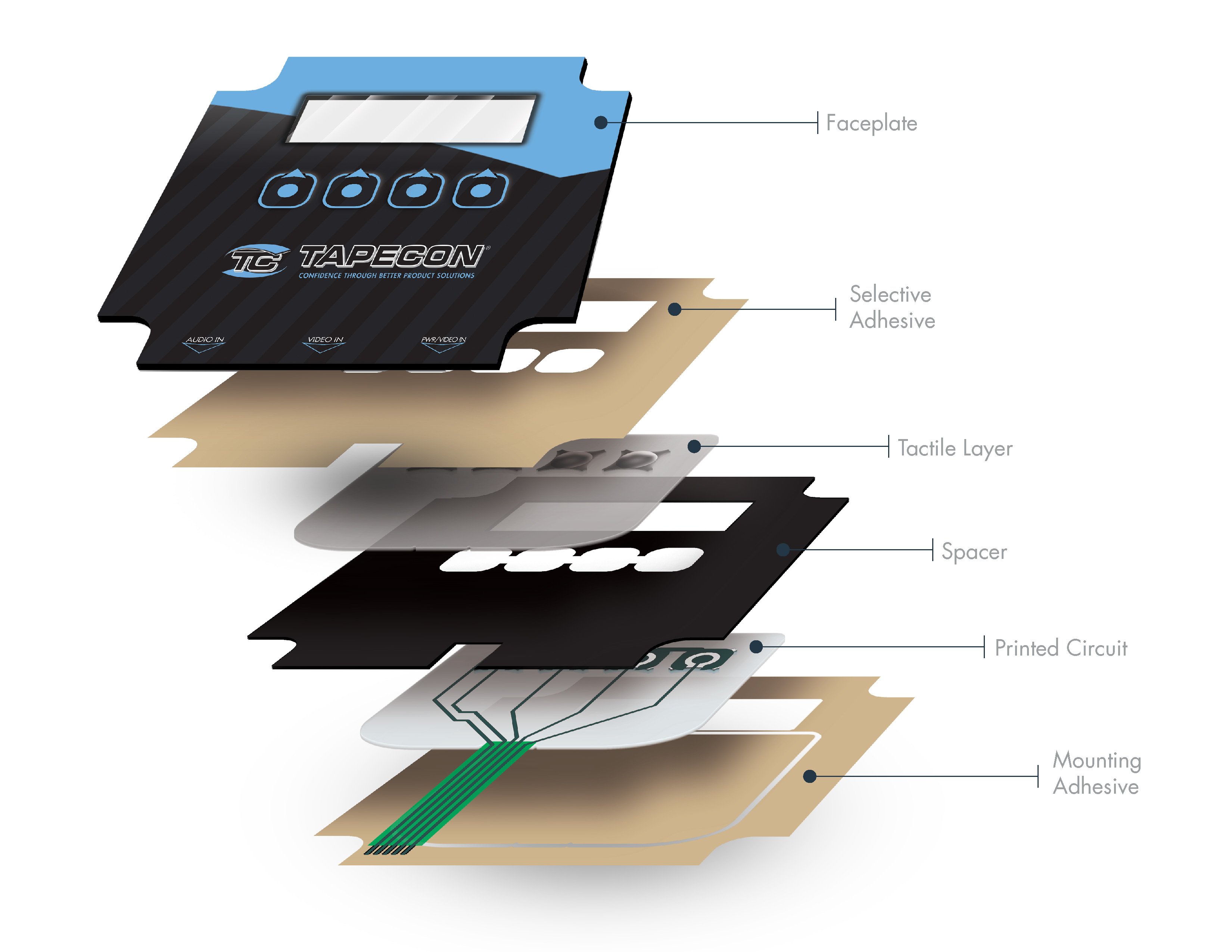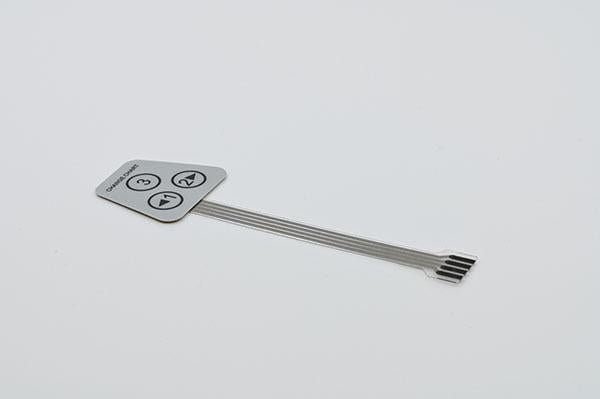Discover How a Membrane Switch Boosts Longevity and Performance in Tools
Discover How a Membrane Switch Boosts Longevity and Performance in Tools
Blog Article
Exactly How Membrane Layer Switches Over Contribute to the Toughness of Electronic Control Panels
Membrane layer buttons play an essential function in enhancing the toughness of electronic control panels, mostly with their multi-layered construction which supplies effective security against ecological aspects such as wetness and dust. The absence of relocating parts significantly lowers the possibility of mechanical failings, making membrane changes perfect for demanding applications.
Definition of Membrane Buttons

Membrane layer switches are made to be thin and lightweight, making them suitable for applications where space is limited. They can be made in numerous forms, dimensions, and shades, providing versatility in design that fulfills aesthetic and functional demands. Furthermore, membrane switches can incorporate various modern technologies, such as tactile comments and LED signs, enhancing individual experience.
As a result of their building, membrane buttons are commonly immune to dust, moisture, and basic wear, adding to their longevity sought after environments. Their smooth layout not only helps with very easy cleansing yet also minimizes the danger of mechanical failing, making them a preferred option for manufacturers seeking reputable customer interfaces in their digital control board.
Security Against Environmental Factors
The style of membrane switches over inherently gives a degree of protection against various environmental factors, which is crucial for keeping capability in challenging conditions - Membrane Switch. These buttons are commonly constructed with layers of adaptable products that shield inner components from dampness, dirt, and pollutants. By encapsulating the wiring, membrane changes lessen the danger of brief circuits and rust, which can significantly hinder efficiency
Furthermore, using robust adhesives and sealants throughout production boosts their resistance to environmental difficulties. Membrane layer buttons can endure direct exposure to chemicals and solvents, making them ideal for industries such as food handling and medical care, where hygiene and tidiness are paramount. Their seamless surface design additionally avoids the buildup of dirt and germs, helping with less complicated cleaning and upkeep.
Temperature changes are one more environmental problem, and membrane buttons are engineered to work properly throughout a large range of temperatures (Membrane Switch). This flexibility guarantees that control board remain operational in numerous settings, from commercial environments to customer electronics
Impact on Individual Interaction
User interaction with electronic control board is dramatically affected by the style and performance of membrane layer switches. These buttons provide a responsive interface that boosts the overall customer experience, permitting instinctive navigation and control. Their responsive nature makes certain that customers receive instant feedback upon activation, which is crucial for jobs needing accuracy and efficiency.
In addition, the smooth surface of membrane changes facilitates simple cleansing and maintenance, advertising customer confidence in the dependability of the user interface. This tidiness is especially crucial in environments where hygiene is critical, such as clinical or food processing setups. In addition, the portable and light-weight design of membrane layer switches adds to the visual charm of control board, encouraging user engagement through a modern and smooth look.
Furthermore, the integration of aesthetic aspects, such as printed icons and backlighting, helps customers promptly recognize functions, decreasing the finding out contour related to new devices. Therefore, users can run devices better, causing enhanced efficiency and satisfaction. In summary, membrane buttons play a crucial role in boosting individual interaction by combining performance, aesthetic appeals, and convenience of usage, inevitably causing boosted functional effectiveness.
Design Flexibility and Customization
Layout adaptability and personalization are essential aspects check over here of membrane layer buttons, enabling producers to tailor digital control panels to particular applications and individual demands. This flexibility enables the assimilation of various style aspects, such as shades, graphics, and appearances, which can improve the visual appeal and individual engagement of the control board.
Membrane layer buttons can be tailored in size and shape, accommodating a wide variety of devices and applications, from commercial equipment to consumer electronics. This dig this versatility makes sure that producers can develop intuitive user interfaces that line up with user assumptions and operational demands. Additionally, the capability to include distinct functions such as backlighting or tactile comments further boosts functionality, enabling a much more interactive experience.
In addition, the production procedure for membrane layer changes supports the fast prototyping of layouts, enabling manufacturers to repeat and fine-tune their principles rapidly. This capacity not only accelerates the advancement timeline yet additionally makes sure that the end product satisfies details useful and visual requirements.

Cost-Effectiveness and Durability
Cost-effectiveness and durability are significant benefits of membrane buttons, making them an eye-catching alternative for manufacturers and end-users alike. These switches are usually more economical to produce additional reading than typical mechanical buttons, mainly because of their simplified manufacturing processes and the lowered number of components required. This expense benefit expands not only to initial manufacturing yet also to long-term operational expenditures, as membrane switches typically need less maintenance and have a lower failing price.
Furthermore, the longevity of membrane layer switches adds to their general worth. Built from durable materials, they are immune to ecological aspects such as wetness, dust, and chemicals, which can bring about premature wear in other button types. The lack of relocating parts reduces mechanical failing, enabling membrane changes to keep performance over prolonged periods.
This sturdiness is specifically beneficial in applications requiring regular performance under requiring problems, such as clinical devices and commercial equipment. Ultimately, the combination of cost-effectiveness and long life makes membrane layer switches over an economically sensible option for suppliers, providing trustworthy options that endure the test of time while enhancing budgetary factors to consider.
Final Thought
In verdict, membrane buttons considerably boost the toughness of electronic control panels with their durable building and safety attributes - Membrane Switch. On the whole, membrane changes represent a trusted and cost-effective selection for boosting the durability and performance of digital control systems.
Report this page